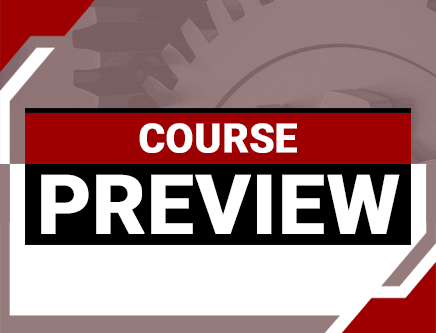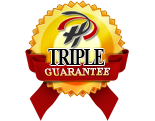Developing Strategic Business Planning Skills
In Developing Strategic Business Planning Skills , you'll learn ...
- Steps needed to evolve into a strategic planner who looks beyond daily tasks to shape the future of your organization
- The human dynamics, organizational culture, and the practical steps needed to implement lasting change
- How to analyze your impression on others, manage their emotions, and recognize "moments of truth"—instances that shape how internal and external stakeholders perceive the organization
- How to become a key contributor at the executive planning table by fostering strategic thinking, emotional intelligence, and performance-driven leadership
Overview
"Engineer/PMP to Strategic Planner" - WHAT'S THE DIFFERENCE? Is this just some way to rename the same old job to make it sound more important?
No, it is something much different. Strategic business management planning encompasses issues that fall OUTSIDE of the traditional engineering or project management function and directly relate to the business of the organization such as:
In this course, you will learn how to successfully negotiate:
- Business-related topics such as finance, marketing, employee relations, and information technology
- Topics related to the general business environment:
- Industry practices and developments, technological developments, economic environment, and labor pool/demographic trends
- Organization strategic planning, organizational budgeting, corporate social responsibility, corporate governance/ethics and due diligence for mergers and acquisitions
- Aligning human capital activities with the business plan such as:
- Developing metrics to measure Human Resource's contributions
- Integrating technology into Human Resource applications
- Leadership development systems tied to organizational goals
The short explanation is a strategic planner plans for tomorrow while everyone else is dealing with today.
This course is designed to guide engineering and project management professionals into the world of strategic planning, equipping them to transition from technical roles to high-level organizational contributors. Structured as a practical and introspective journey, the course helps participants evolve into strategic planners—professionals who look beyond daily tasks to shape the future of their organizations.
The course emphasizes that strategic planning is not just about business theory; it involves understanding human dynamics, organizational culture, and the practical steps needed to implement lasting change. Beginning with self-assessment, learners are encouraged to examine their behaviors, perceptions, and relationships to develop the personal credibility required to lead change effectively. Topics such as reliability, accessibility, and alliance-building are explored as key traits of successful planners.
Participants learn to analyze their impression on others, manage their emotions, and recognize "moments of truth"—instances that shape how internal and external stakeholders perceive the organization. A significant portion is devoted to understanding and applying performance metrics, both “hard” (quantifiable) and “soft” (behavioral), with practical guidance on designing feedback loops, conducting performance reviews, and aligning employee development with strategic goals.
In addition, the course covers power and influence in organizational settings, offering insight into how personal and positional power can be used to lead change. Learners are taught to develop mentorship relationships, foster cooperation, and design actionable strategic plans. Real-world examples, forms, and thought exercises reinforce learning and encourage practical application.
Ultimately, the course positions the learner to become a key contributor at the executive planning table by fostering strategic thinking, emotional intelligence, and performance-driven leadership. It equips professionals not just to plan effectively, but to inspire and guide others in navigating change.
This course includes many Human Resource issues because of one very important fact that many strategic planning initiatives overlook: acquisition, maintenance, and development of a productive workforce is the greatest expense of any business. If you want to become an effective strategic planner for your organization, it is critical that you have a thorough understanding of the vital role played by your Human Resources group.
This do-it-yourself (DIY) manual will help a self-directed professional who wants to evolve from the day-to-day issues to eventually becoming a contributing participant at "The Table" helping the executive team's plan for the future become a reality.
Ultimately, the course positions the learner to become a key contributor at the executive planning table by fostering strategic thinking, emotional intelligence, and performance-driven leadership. It equips professionals not just to plan effectively, but to inspire and guide others in navigating change.
Your journey to the Table using this manual will follow this path:
- Looking inward and helping you prepare for the long journey ahead (you did not think this would be accomplished in an afternoon, did you?)
- Looking outward at the organization and viewing its long-range plans through the lens of the short range reality you will be facing from an HR perspective
We introduce you to some critical topics that you will encounter along the way. We will lead you far enough into them so you will be able to understand and discuss their basic concepts with the wide range of professionals, consultants, and vendors you will encounter in your new role.
Specific Knowledge or Skill Obtained
This course teaches the following specific knowledge and skills:
- Seven Personal Elements of Success
- How to analyze your current role to determine important elements for your success as a strategic planner
- The activities and organizational perspective of a strategic planner
- How to develop a plan for building alliances with others
- How to examine your behaviors to determine if there are “qualifiers” associated with them that may restrict career your development.
- How to analyze your daily performances to determine if they are actually productive or just “busy”
- The difference between work stress and work tension within a workforce
- How to determine whether you connect authentically with others
- How to analyze yourself to determine the extent of your orientation toward reality
- How to analyze your ability to embrace, engage, and deal with the negative.
- How to analyze your daily behavior to discover your potential for self-inflicting wounds
- How to analyze the potential impression that you make on others
- The basic elements of getting people to like working with you and how to prioritize those elements of your behavior to ensure the most successful interaction
- The value of managing your reaction to an event when you cannot control the event itself
- The value of maintaining a sense of proportion when encountering disappointment so as not to harm your strategic plans
- A proven method of helping people adapt to organizational change
- How to apply the Cheshire cat’s lesson to organizational strategic planning
- The value of “losing smartly”
- How to express desired goals with the critical trio of performance elements
- The value of and how to design “feedback loops” for workflows
- How to analyze typical project work processes for opportunities of process improvement
- The value of developing a mentoring relationship
- The various types and sources of power within an organization
- Planning expectations in terms guaranteed to result in productive outcomes
- How to design a “hard” and “soft” skills performance scale to measure employee performance within the parameters of your strategic plan
- How to design an overall employee performance assessment instrument to gauge progress within your strategic plan
- How to design an overall performance measurement process for organizational implementation
- How to develop a strategic action plan for individuals
- How to design and conduct effective goal-setting meetings
Certificate of Completion
You will be able to immediately print a certificate of completion after passing a multiple-choice quiz consisting of 40 questions. PDH credits are not awarded until the course is completed and quiz is passed.
| This course is applicable to professional engineers in: | ||
| Alabama (P.E.) | Alaska (P.E.) | Arkansas (P.E.) |
| Delaware (P.E.) | Georgia (P.E.) | Idaho (P.E.) |
| Indiana (P.E.) | Iowa (P.E.) | Kansas (P.E.) |
| Kentucky (P.E.) | Louisiana (P.E.) | Maine (P.E.) |
| Minnesota (P.E.) | Mississippi (P.E.) | Missouri (P.E.) |
| Montana (P.E.) | Nevada (P.E.) | New Hampshire (P.E.) |
| New Mexico (P.E.) | North Dakota (P.E.) | Ohio (P.E. Self-Paced) |
| Oklahoma (P.E.) | Oregon (P.E.) | Pennsylvania (P.E.) |
| South Carolina (P.E.) | South Dakota (P.E.) | Tennessee (P.E.) |
| Texas (P.E.) | Utah (P.E.) | Vermont (P.E.) |
| Virginia (P.E.) | West Virginia (P.E.) | Wisconsin (P.E.) |
| Wyoming (P.E.) | ||


 Live support chat
Live support chat




